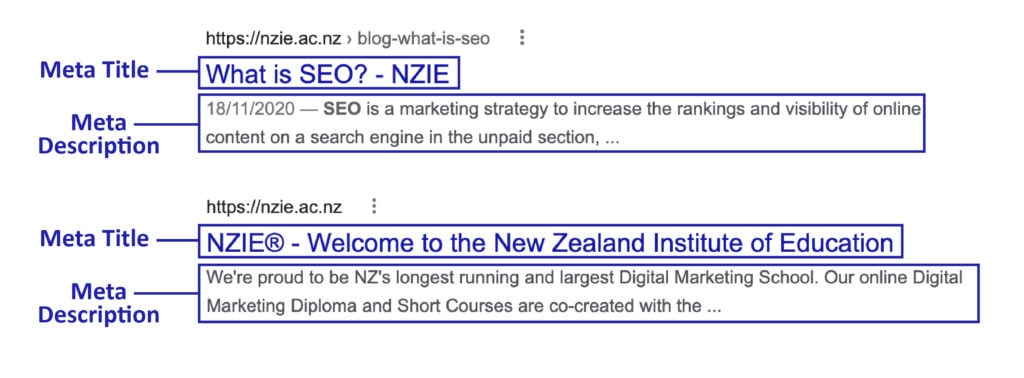A Basic Guide to getting started with Search Engine Optimisation (SEO).

By Kristine Aitchison
Author & Content Specialist
Do you ever feel clueless when it comes to Search Engine Optimisation (SEO)? Optimising your website for search can be a lot to get your head around. We’ve broken down some basics, so you can get started optimising your website today.
Make Your Website Search Friendly.
Search Engine Optimisation (SEO) is the process of getting discovered by search engines, such as Google and Bing, through organic unpaid search results. Optimising your website for search means that when someone searches for a word, topic, or phrase that relates to your business, your website is more likely to show up in the results.
When people use search on Google or Bing they’re usually searching with the aim of finding a result. A search engine’s primary function is to help people find that result. You can help the search engine decide that your website is what people are looking for by making improvements so that your site appears in the organic search results. There are several ways you can make your content more search-friendly. Let’s look at some basics.
Titles + Meta Description:
Titles and meta description is embedded in the backend of your website. Where it is used to showcase search results for your web page. This is what the index displays when your website comes up in a search engine. The title is the first line and the meta description is the few short sentences below that.

Ensure this backend data is optimised by using a title that best describes what your page is about. As well as highlighting your company name; For example, ‘Fred’s Pies – Best Pies in New Zealand.’
The meta description is usually just two short sentences below your title and should also reference the title. For example, ‘Fred’s Pies are the best in New Zealand. We offer a fantastic range of delicious pies and other bakery items, such as sandwiches, sweet treats, and sausage rolls.’
Headings + Body Copy:
Your headings and your body copy are what people read when they visit your website. Therefore, try and write for your customer base. Additionally, headings should be concise, and your body copy should be relevant to what your page is about. More importantly, remember you are writing for people, so be consistent and clear about the information you share. As this will surely improve your search engine rankings.
Images + Alt Text:
Search engines can’t see the scrumptious photos of your delicious pies, but they can see the code behind them. To ensure search engines identify your image, it helps to give it a descriptive name. An image named ‘image1.jpg’ isn’t helpful to a search engine, but an image named bacon-and-egg-pie.jpg is. Adding ‘alternative text’ or ‘Alt tag’ in the code of your image is also useful for web browsers that don’t display the image. Furthermore, it’s beneficial for people with vision impairments who may use software to listen to the web.
Keywords + Key Phrases:
When writing body copy for your website your first step should be keyword research. This means, finding out what your potential customers are searching for and choosing keywords and key phrases to match. Ideally, you will incorporate common keywords people often search for within your website content. For instance, look for keywords that are related to your business and have a little less competition.
Long-tail key phrases tend to have less competition than short-tail keywords and may render better SEO results. A short-tail keyword has no more than three words like ‘vegetarian pies’. Whereas long-tail keywords are something like ‘best places to buy organic vegan pie near me.’
Backlinks:
Finally, let’s touch on backlinks. A backlink is a term that refers to one website linking to another. These links act like a tick of approval and tell search engines that your site is offering good quality content. The best way to get links to your site is by producing high-quality sharable content. Then if another website refers to your piece of content, it creates a backlink for you. This also tells search engines that others think your content is worth linking to. Therefore worth boosting up higher in search results.
Filling in your SEO skill gaps
If you want to deep-dive further into optimising your website for search then consider upskilling in SEO strategy. Our industry experts bring a wealth of knowledge and experience into our digital classrooms. Making sure you graduate with practical skills you can implement straight away to meet your search engine marketing goals!


